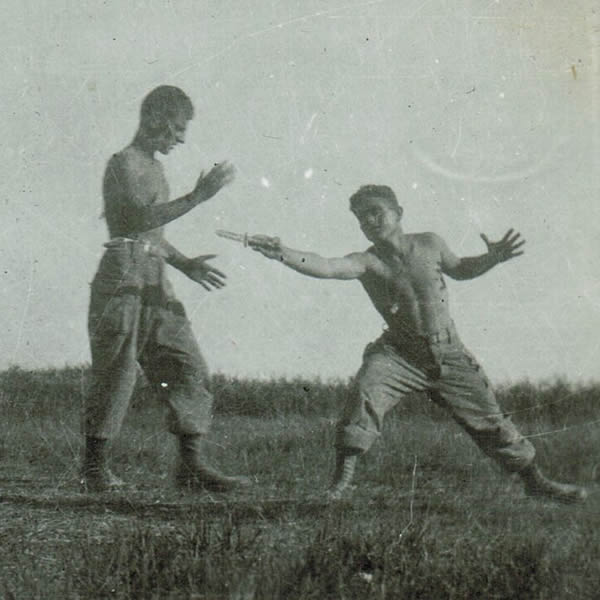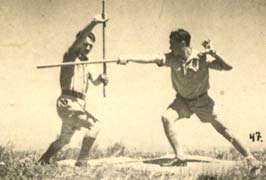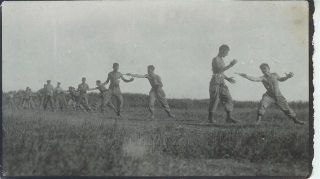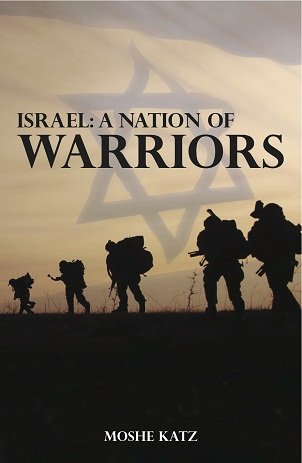- Home
- Krav Maga Blog
- Krav Instructors
- Train in Israel
- Tour Train Israel
- Krav Shop
- DVD
- Kickboxing
- IKI Near Me
- Seminars
- IKI Membership
- On-Line Training
- Krav Maga Training
- Testimonials
- History Krav Maga
- Instructors Page
- Past Blogs
- Spanish
- Italian
- Certification
- Contact
- Holland Seminar
- Vienna Seminar
- Poland Seminar
- Italy Seminar
- Belt Requirements
Krav Maga history
true history
Read it in French Le Krav Maga Historique
Read it in Italian Krav Maga Storia
Read it in Greek Krav Maga History Greek
Our next Tour and Train in Israel:
June 2026

Early training, Kapap in the Israeli Defense Forces.
Krav Maga literally means "Combat - Contact, or touch" or "Close Quarter Combat".
Krav Maga has no single "founder" and no official beginning. It is the product of the needs of the times and the efforts of many instructors over the years, each adding and modifying based on his own skills, understanding and experience.
The roots of modern Krav Maga began with the need of self-defense in the land of Israel. One must first understand a little bit of Jewish history.
The Jewish people, a great fighting nation, was defeated (like most of the world) by the Romans in three successive wars in the first and second centuries. (for the complete story of the Jewish people as a fighting nation please see my book "Israel, a Nation of Warriors")
Jews against all odds, have always maintained a presence in the Land of Israel (called "Palestine" "Southern Syria", and other names by the various occupation forces over the years, but only and always "The Land of Israel" by the Jewish people. Jews are indigenous to this land). Around the 1880's due to political changes in Europe, Jews were finally able to return in greater numbers to the Land of Israel.
These returning Jews were philosophers, doctors, piano and violin players, and university professors; they were not used to fighting or farming, but they would soon learn, they had given up their old lives in the Exile and were ready to begin a new and challenging life in their ancestral homeland. The new city of Tel Aviv was formed, it means Tel - old ruins, and Aviv - Spring, i.e. in the old land, filled with our ancient ruins we shall start again and have a new spring, Aviv. Tel Aviv was the first modern Israeli city.
The Jews who had been living here for centuries were poor, religious, and supported mostly by small trade, crafts, and help from their brethren abroad. Most studied the holy scriptures and were supported by charity as they were seen by the Jewish communities abroad as the Keepers of the Flame.
They had no militia. They were regarded by their Arab neighbors as weak and helpless. They were considered fair targets by the warlike Bedouin Arabs and other Muslims who did not care for them. Some of these Jews had never left the Land of Israel, they were a direct link back to the glorious days of the Holy Temple and before. Others had come to Israel after the expulsion from Spain in the 15th century, the Spanish Inquisition. The community was centered in Jerusalem, Safed, Hebron, Tiberius and the Galilee.
The Arabs did not respect weakness and referred to the Jews as "Walid el Mitha"- The child of death". Jewish blood was considered cheap. The Jews lived in their own quarters, scared and at the mercy of others.
The Jews emigrating to Israel from around the world, often called "Zionists" as they wished to return to Zion/Jerusalem, coming home to their ancestral homeland, found this situation shocking, intolerable and unacceptable. They challenged the existing authority and way of life. They began to "adjust" to the Middle East. We have learned to live in this hostile environment.
Although Jews had been living in Israel continuously since the loss of independence in the year 135 C.E. their numbers were few. This began to change in the 1880's with a growing return to Israel by Jewish immigrants from all over the world. These Jews were different; they were young, many were secular, and they were prepared for life as farmers and fighters. They were ready to fight back. The Arabs and Turks living here at the time did not care to see the Jew come home and used violence to attempt to stop the growth of Jewish towns. With these attacks comes Jewish defense. Thus, it can be said that the roots of modern Krav Maga began at this stage, in the 1880's.
In 1903 the Maccabee Union was formed to teach Jews physical fitness and strength. They wanted to end the era of "Walid el Mitha". They soon began training with stick (early Kapap) but the goal was rifles, live weapons.
In 1907 a group was formed "HaShomer" - "The Guard", with the purpose of defending Jewish settlements. From this point, and even before this, is a constant exploration and evolution of hand-to-hand self defense techniques and strategies. This process continues even today. No one person can claim rights to this process. The need for self defense is as old as man himself.
In 1919, Jerusalem, Ze'ev Jabotinsky founded the "Haganah"- "Defense", for the purpose of defending Jews against the increasing Arab attacks.
Various instructors are instrumental in developing what would become known as Kapap and eventually Krav Maga.
In January 1941 a self-defense course takes place, the chief instructors are Maishel Horowitz, Menashe Harel, Gershon Kopler, and Yitzhak Shtibel. This is a key point in the organized development of Israeli self-defense.
At the same time, in lands round the world, Jews of the Exile also face violence. They too begin to form self-defense groups. My grandfather, Rabbi Isaac Klein, told us of such groups in his hometown in the area of Munkacs, Carpata Ukraine, around the 1930's. It was formed by Jewish veterans who served in the Hungarian military in World War One. The groups' purpose was to defend the Jewish inhabitants from roaming gangs of Jew-haters.
Another such group was in Czechoslovakia in the 1930's. Emrich (Imi) Lichtenfeld, an expert in boxing and wrestling, together with other Jews, formed a Jewish self-defense group. He was influenced by his father, Shmuel, a detective and Defensive Tactics instructor with the local police force. Shmuel Lichtenfeld was known as a tough officer with a reputation for arresting the most violent criminals.
Young Imi grew up in a tough area and during difficult times for Jews, he had to deal with fascist thugs, violent gangs and Jew-haters. On the street he learned to distinguish between Art and Martial, between artistic or sporting techniques and real-life self-defense.
Lichtenfeld began to incorporate techniques from different styles to form an effective approach to self-protection, later on he would learn more in Israel. But Europe was no place for a Jew to be and he had the foresight and wisdom to leave while he still could. He eventually ended up in the Land of Israel in 1942, then controlled by the British. The British had the uneasy task of trying to maintain control of two populations, at odds with each other and opposed to the British occupation. When Lichtenfeld arrived in the Land of Israel, the process of the development of Kapap/Krav Maga was well underway. Lichtenfeld joined in as a student.
Learn authentic, evolving, Krav Maga on line, from any place in the world.
Krav Maga DVD's from Israel

Early training, Kapap

Early Kapap/Krav Maga training
Lichtenfeld joined the "Hagana"(Hebrew for Defense), the defensive force founded by the legendary leader Ze'ev (Vladimir) Jabotinsky in 1919 for the purpose of defending Jewish settlements from Arab attacks.
Jabotinsky was one of the great Jewish leaders of that century. He foresaw doom for European Jewry and urged them to relocate to the Land of Israel (aliyah - ascent). He founded the Betar youth movement and the Herut (Freedom) political party. Future prime ministers Menachem Begin and Yitzhak Shamir were among his disciples. Benjamin Netanyahu is from the same line.
Jabotinsky, or Jabo as was known by the Jewish masses, was not only a great leader and speaker, he was also a writer and a poet. He wrote in many languages; textbooks on Hebrew language, novels and poems.
His works inspired his generation and those that followed. One of his most famous articles was "Jews learn to Shoot!" Jabotinsky formed the Zion Mule Corps as part of the British army in World War One, and he himself enlisted as a private.
While Jabotinsky was the philosophical force and organizational force behind Jewish military revival, others were the hands-on Krav Maga instructors.
Lichtenfeld was assigned to join the unarmed combat instructors team. Eventually he was trained to become a Kapap instructor and was among those who trained the Palmach and Palyam (elite units). He is credited with shifting the emphasis from the use of the stick to the greater incorporation of Jujitsu. He was one of many students and instructors who influenced the development of Israeli self-defense during those years. It is important to note that Lichtenfeld joined an on-going process of development of Kapap/Krav Maga. He participated in an instructors course (and therefore was a participant and not the founder), he never claimed to have invented a new system.
When Israel won it's independence in 1948, all pre-state militias joined together to form the Israel Defense Forces (IDF). Lichtenfeld was recruited into the staff of the IDF physical training school where he was one of eleven Kapap instructors. In the book (available only in Hebrew) by historian Noah Gross, Lichtenfeld is mentioned briefly three times in 156 pages. Not to diminish his value or contributions, but to make him a "founder" is historically incorrect. Those who do so have their own interests in mind.
Krav maga includes techniques from many martial arts. With the establishment of the IDF Krav Maga was adopted as the official self defense style of the IDF and Israel Police Force.
In 1964 Lichtenfeld retired from the IDF and opened a private Krav Maga club. With this he becomes the first to offer Krav Maga to civilians, although in Israel nearly all civilians serve in the military and thus already have some Krav Maga training. His fame comes from his initiation of the development of Krav Maga for civilians. This is a process still going on today with many branches.
There are No Krav Maga Tournaments
Krav Maga is free flowing; all styles of striking, punching, kicking, take-downs are employed with the aim of neutralizing or escaping the enemy in the shortest amount of time possible. Unlike competitive martial arts, where limits are placed on the types of techniques used or the areas targeted, Krav Maga has no limitations. Groin shots, eyes, throat, face, are all included in the training. Therefore Krav Maga does not hold competitions and will never seek to be represented in the Olympics. The danger to the participants would be too great. If you see "Krav Maga Tournament" please know that someone has corrupted the ways of Krav Maga.
Krav Maga is designed for self-defense, combat, and worst case scenarios. A major part of the training involves the ability to handle such stressful situations, both physically and mentally.
Krav Maga is designed to be easy to learn and to apply in many different types of situations. Therefore there is no such things as "Civilian" Krav Maga, or "Military" Krav Maga.
Krav Maga chooses simple gross motor movements that are natural to the body, based on instincts that are already established within us.
Perhaps the most unique aspect of Krav Maga is the emphasis on aggressiveness,, sticking to the goal no matter what, even when it is hard, even when you feel you have nothing left, and a no compromising attitude towards the enemy. Our goal is to neutralize the enemy, the specific technique does not matter.
Krav Maga is taught to all units of the Israel Defense Forces, the amount taught depends upon the unit. As such nearly everyone in Israel has some Krav Maga training. Depending on the unit, knife and gun disarms are also taught. All training involves strict discipline, aggressiveness and a warrior mindset.
For the relationship between Krav Maga, Kapap, and Lotar see Israeli Martial Arts .
Learn about warfare in the days of the Bible; Biblical Warfare
Read interview with Israeli historian Noah Gross, about the early years of Krav Maga and Kapap.
From Historian Noah Gross
About the historical connection between Krav Maga and Kapa there are certain facts which I have come to realize through my extensive research. These facts are simple and in my eyes self-evident when one agrees to look at the entire picture based on biographies, testimonials and historical documents. Many people do not like these facts and conclusions that one must draw from them.
That's too bad, pleasant or unpleasant, it is what it is.
I present them to you here with my commentary about them and the conclusions I draw from them.
They are as follows:
1. Krav Maga as a term appears for the first time in the IDF in 1948. Krav maga and Kapap are terms used interchangeable for the same body of knowledge (techniques and drills) in the IDF for the entire decade 1948 - 1958.
2. Judo Shimushi (Hebrew for Useful/Practical/Applicable - Judo) was a term also used interchangeably with Krav Maga and Kapap.
3. A manual under the title of "Judo Shimushi" was published in 1947/48. The manual is dedicated to the memory of Gershon Kopler and Yehuda Markus. It attributes to them the compilation of this hand-to-hand combat body of knowledge, and organizing it under a methodical way of practice (i.e. systemizing it).
4. This manual served as the main reference book for all Krav Maga/Kapap courses in the school for physical training, where all hand-to-hand combat instructors were trained and Imi served from 1948 to 1964. The manual served as the main reference until 1960 when a hand to hand combat manual titled "Krav Maga" was published.
5. The publication of the 1960 manual does not imply a change in the system or some revision. It is simply an indication that the name Krav Maga became the preferred term of use and that it was time to make a new manual reflecting the present state of Krav Maga or hand-to-hand combat in the IDF.
6. Kapap was developed in Mandatory Palestine by a group of instructors during the 1930's and 1940's. The main body of it was organized and taught before Imi arrived in Mandatory Palestine and before he joined the Palmach as an instructor.
7. Given that Kapap and Krav Maga are one and the same until 1958 then one must draw the simple conclusion that Imi did not develop or "invest" this body of knowledge.
8. If he did not develop it, or invent it, then there is no direct connection between Bratislava and Krav Maga.
9. Imi was a Kapap instructor in the Palmach and then a Kapap/Krav Maga instructor in the IDF.
10. The entire structure of the physical training branch and within it the school of physical training were staffed by a majority of Palmach veterans like Imi.
11. The hand-to-hand Combat curriculum logically was adapted in the most part from that practiced in the Palmach.
12. Imi's contribution to the selection of the techniques and how they are taught was minimal to non-existent until the formation of the IDF and the school for physical training.
13. Imi assumed the role of lead instructor over time and not from the outset. Factually the title of chief Krav Maga instructor did not exist until the second half of the 1950's and perhaps came in only around 1960.
14. Some Krav Maga history narratives claim Imi was brought to the IDF to revise useless methods of self-defense. This is at best a gross misunderstanding and of the facts and at worst a flat out distortion and lie with the purpose of aggrandizing Imi's role.
The IDF underwent a revision in 1953. As part of that revision the branch of physical training entered a process of review and revision. Commissions were set up for each discipline taught at the school, one of them being the hand-to-hand combat. It was titled the commission for Krav Maga, and Imi was appointed at its head.
There were very clear guidelines with regard to the commissions task. One of them was to take the "Judo Shimushi" manual and pair it down for the needs of combat units boot camp trainees.
This is the only "revision" Krav Maga underwent in the IDF before Imi's retirement in 1964 and it clearly establishes that "Judo Shimushi", a manual he did not write or develop was in fact the manual the IDF used for Krav Maga.
15. Imis' contribution to Krav Maga is an aggregate of his influences and adjustments made to techniques and methods of training over the years of his service in the IDF and then the fact that he took this body of knowledge into the civilian arena and started the process of adjusting it to self defense purposes. This is a process that continues to this very day, and every day we face new challenges.
learn krav maga in israel!
Come experience Israel the Krav Maga way. Learn Krav Maga in the country where it was formed and developed. Learn the history that led to the creation of the Israeli Defense Forces, Krav Maga and the Israeli warrior mentality. Spend ten day that will change your life.
Live in Maaleh Adumim, visit the Dead Sea, Masada, the Old City of Jerusalem and other sites of historic and military importance. See your Krav Maga skills reach new levels, regardless if you are an absolute beginner or veteran high ranking instructor, this course will meet your needs.
Register for Tour and TrainIsrael: A Nation of warriors
By Moshe katz

Available on Kindle and on Amazon (paperback) or directly from the author
Over 350 pages, the history of Israel and the Jewish people as a fighting nation from the day of Abraham to our own times. The book covers the history and roots of Krav Maga and the modern Israeli Defense Forces. The book analyzes what makes Israeli security the best in the world. Recognized by the Israeli government and awarded an official Library of Congress number.
Signed copy by author